As someone who has been in the catering equipment industry for years, I understand the importance of choosing the right commercial induction cooker for restaurant operations. Whether it’s a hot pot restaurant, a fast-food joint, or a hotel kitchen, the choice of a commercial induction cooker directly impacts cooking efficiency, energy costs, and even the customer dining experience. With countless products on the market and a dizzying array of parameters, how do you pick the one that truly suits your needs? Today, I’ll share my hands-on experience and break down the key parameters to focus on when selecting a commercial induction cooker, helping you avoid pitfalls and find the perfect equipment.

Why Parameters Matter So Much
Unlike household induction cookers, commercial induction cookers face high-intensity usage, frequent operation, and complex kitchen environments, demanding greater stability and performance. Choosing the wrong parameter could lead to inefficiencies, frequent breakdowns, or even higher operational costs. I once saw a hot pot restaurant suffer because they chose an underpowered induction cooker, resulting in insufficient heat during peak hours, long wait times for customers, and a flood of complaints. Getting the key parameters right ensures the equipment meets your needs and saves your business money in the long run.
In this article, I’ll dive into the core aspects—power, control method, material and structure, safety features, and energy efficiency—and share practical cases and tips to guide your decision.
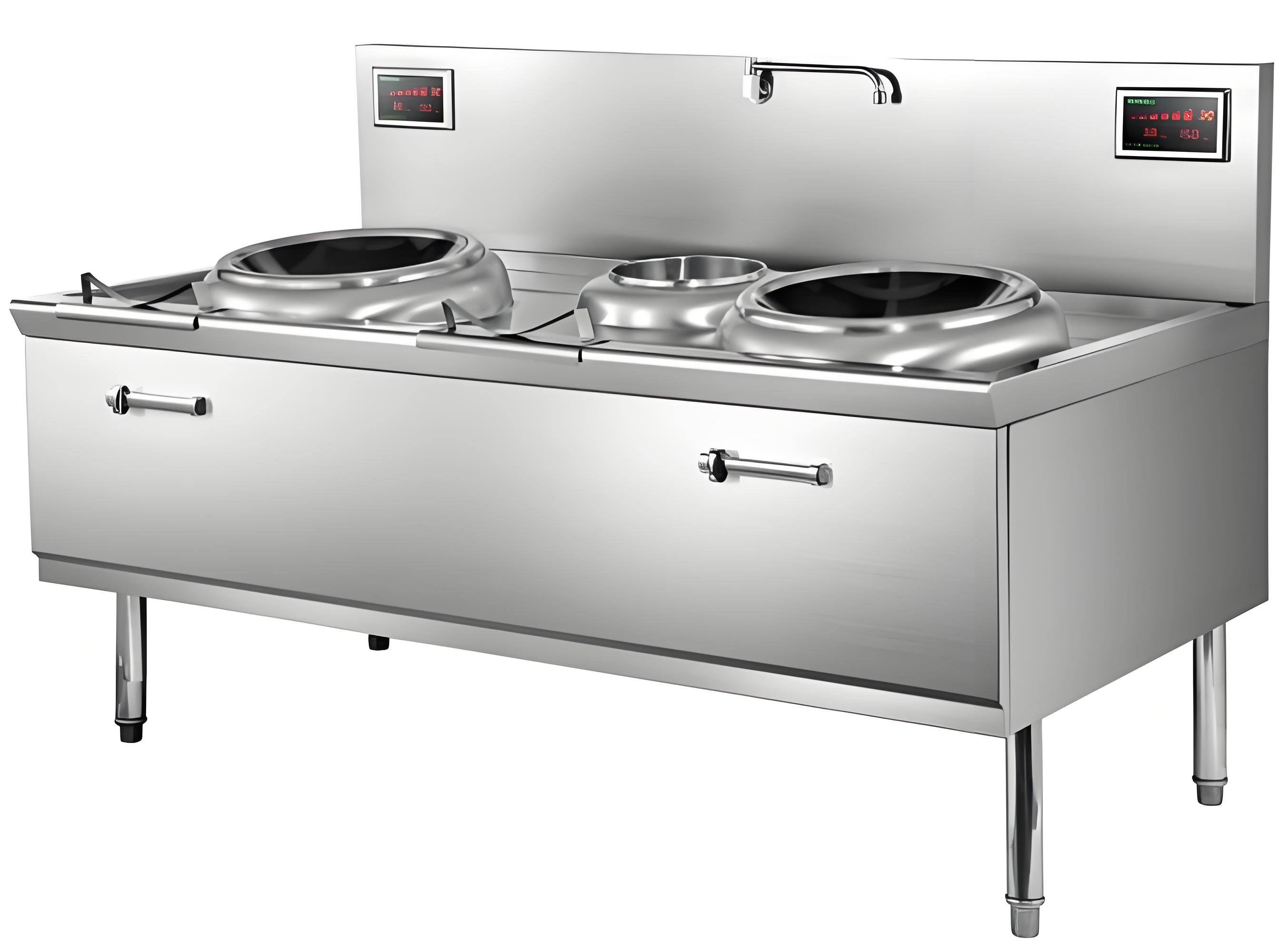
1. Power: The Core of Cooking Performance
Power is one of the most critical parameters for a commercial induction cooker, as it determines heating speed and cooking capacity. Commercial induction cookers typically range from 3kW to 35kW, and your choice should depend on your operational needs.
Small to medium-sized restaurants or hot pot businesses: For restaurants serving a few dozen tables daily, I recommend 3.5kW to 8kW cookers. These are suitable for single-pot cooking, such as hot pot, stir-frying, or noodle boiling, ensuring quick meal delivery.
Large chain restaurants or hotel kitchens: For large kitchens handling multiple dishes or large pots of soup, opt for 15kW to 35kW high-power models. These deliver robust heat for high-intensity tasks.
Key Considerations:
Power Supply Compatibility: High-power induction cookers require robust electrical systems. Before buying, confirm your restaurant’s power supply (single-phase 220V or three-phase 380V). I once had a client who bought a 20kW cooker only to realize their restaurant’s wiring supported only single-phase power, forcing a return.
Actual Needs: Higher power isn’t always better. Overpowered units can waste energy. For example, a small noodle shop that chose a 15kW cooker ended up with skyrocketing electricity bills, which wasn’t worth it.
Here’s a quick reference table for power selection:
| Scenario | Recommended Power | Applicable Use | Power Supply |
|---|---|---|---|
| Small hot pot restaurant | 3.5kW – 8kW | Single pot, small dishes | Single-phase 220V |
| Medium-sized restaurant | 8kW – 15kW | Multiple pots, stir-fry, or soups | Three-phase 380V |
| Large hotel kitchen | 15kW – 35kW | Large pots, bulk cooking | Three-phase 380V |
2. Control Method: Is It User-Friendly?
The control method of a commercial induction cooker directly affects the chef’s experience and meal preparation efficiency. Common control types include knob, button, touch, and smart digital control. Each has its pros and cons, and your choice should align with your kitchen’s needs.
Knob Control: Simple and durable, ideal for traditional kitchens where chefs prefer quick fire adjustments, though precision may be slightly lacking.
Button Control: Offers clear power levels and intuitive operation but may wear out over time with heavy use.
Touch Control: Modern and easy to clean but less ideal in wet or greasy environments.
Smart Digital Control: Supports preset programs and timers, perfect for chain restaurants aiming for standardized output, though it’s pricier and maintenance costs are higher.
My Advice:
For traditional Chinese restaurants where chefs prefer manual control, knob or button controls are practical choices.
For chain brands seeking consistent dish quality, smart digital control ensures standardized cooking. A client running a chain of hot pot restaurants switched to smart digital cookers, and the consistent heating time and temperature improved customer feedback on flavor.
Note: Regardless of the control type, waterproofing is crucial. Kitchens are humid and greasy, and low waterproof ratings can lead to damage. Look for equipment with an IPX4 or higher waterproof rating.
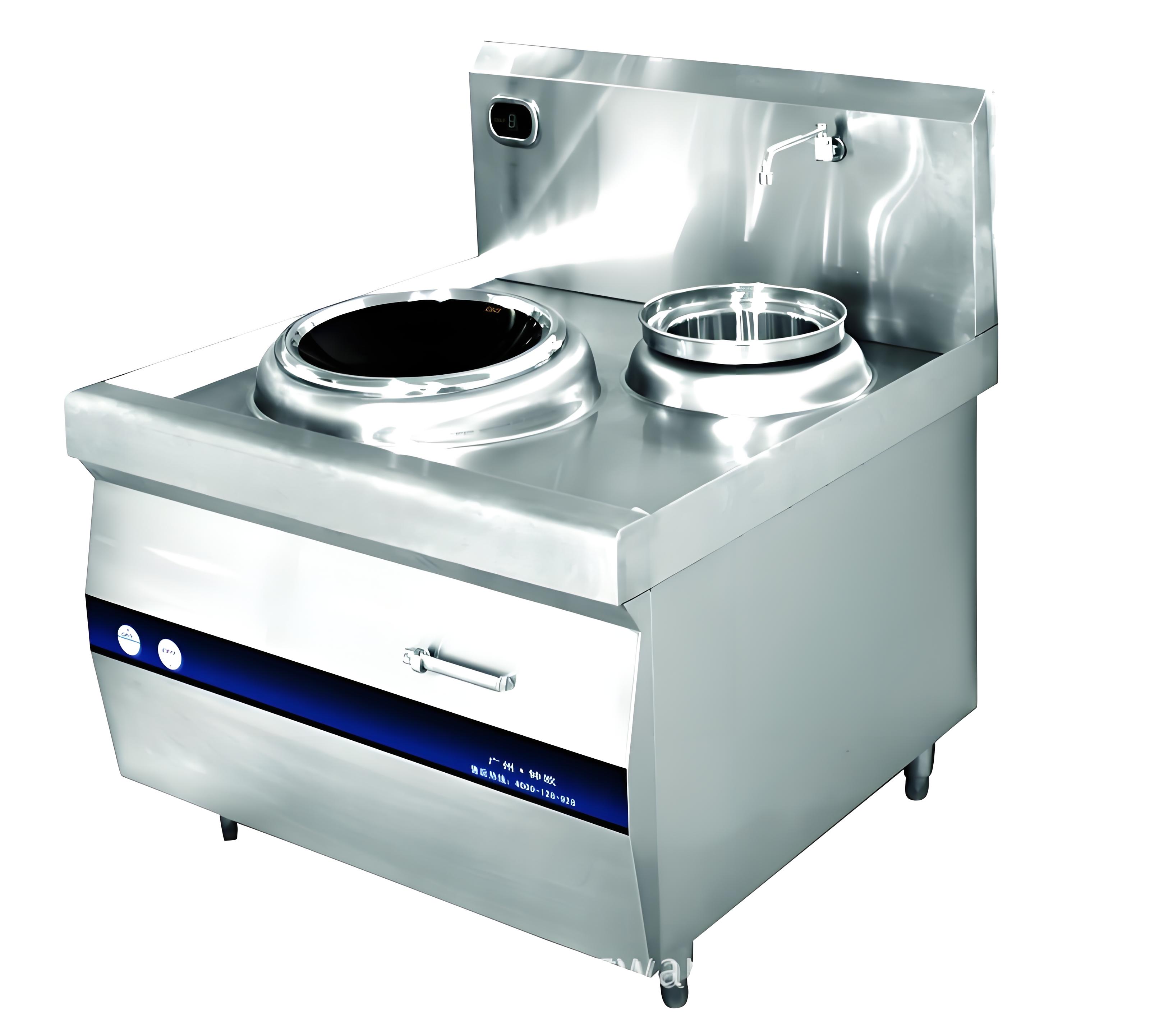
3. Material and Structure: Durability Is Key
The material and structure of a commercial induction cooker determine its durability and ease of maintenance. Here are the key points to focus on:
Panel Material: Most commercial induction cookers use microcrystal glass or stainless steel panels. Microcrystal glass is heat-resistant, corrosion-resistant, and easy to clean but prone to cracking. Stainless steel is more durable but less efficient at heat transfer and harder to clean. I recommend microcrystal glass panels at least 4mm thick for a balance of aesthetics and durability.
Body Material: The body is typically made of stainless steel. Opt for 304-grade stainless steel to prevent rusting over time.
Cooling System: Commercial induction cookers run for long hours, making heat dissipation critical. High-quality models feature multi-duct cooling systems and high-power fans to prevent overheating. I once saw a restaurant struggle with a cooker that had poor cooling, leading to frequent overheating shutdowns that disrupted operations.
Selection Tips:
Check the panel flatness to ensure pots sit flush for even heating.
Choose modular designs for easier maintenance and part replacement, reducing long-term costs.
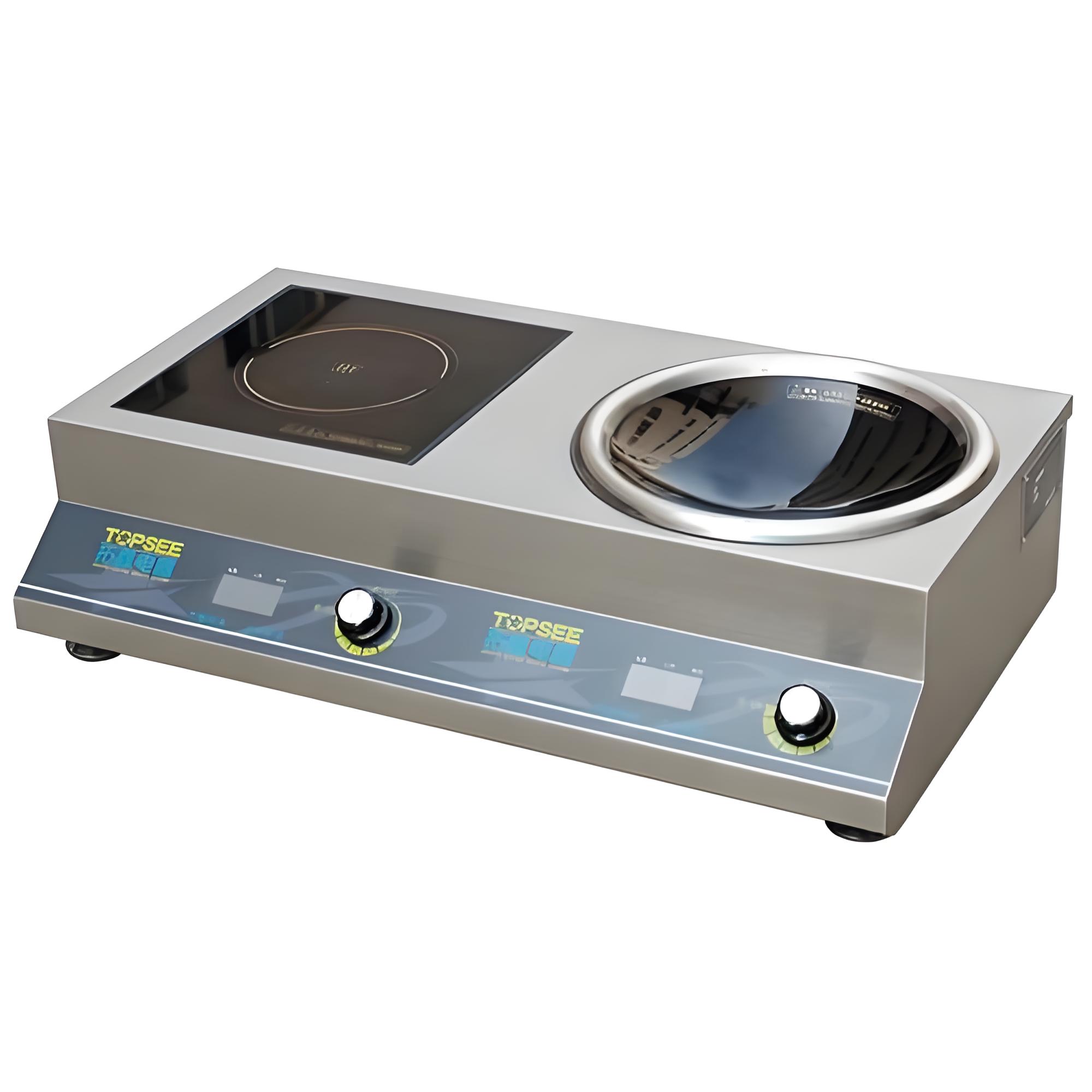
4. Safety Features: A Kitchen’s Safety Net
Kitchens are complex environments, so safety features are non-negotiable when choosing a commercial induction cooker. Here are the critical safety functions to check:
Overheat Protection: Automatically cuts power if the cooker overheats, preventing damage or fire risks.
Overcurrent Protection: Safeguards against electrical overloads, protecting the circuit.
Dry-Burn Detection: Stops heating when no pot is detected, saving energy and enhancing safety.
Leakage Protection: Ensures safe operation in humid environments.
Real-Life Example: A friend who owns a barbecue restaurant bought a cooker without dry-burn detection. One day, a staff member forgot to turn it off, and it ran empty for half an hour, wasting electricity and nearly damaging the panel. After switching to a model with dry-burn detection, the issue never recurred.
Advice: Ensure the cooker has CE certification or China’s 3C certification, which are basic guarantees of safety standards.
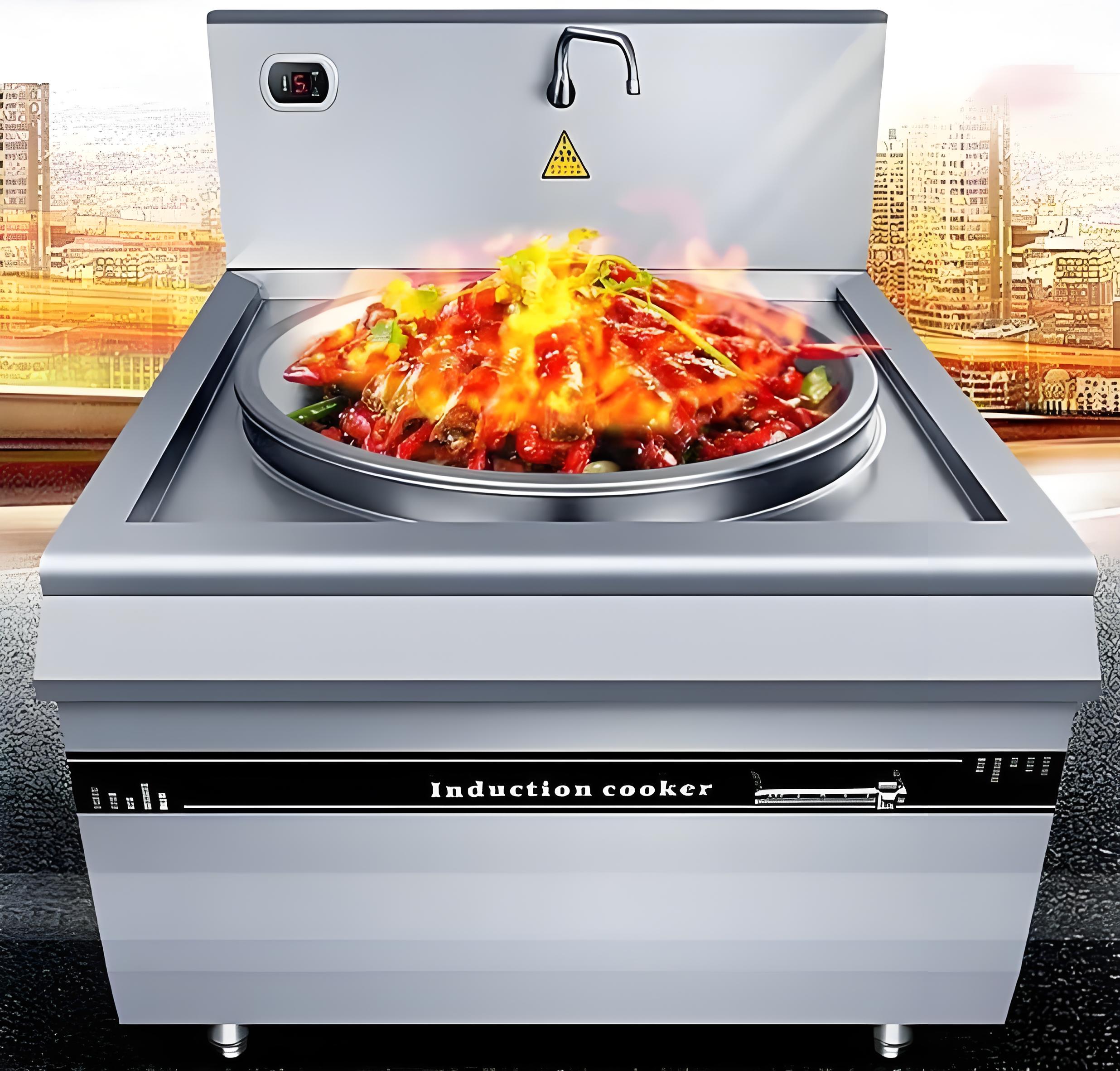
5. Energy Efficiency: Saving Money Matters
The energy efficiency of a commercial induction cooker directly impacts operational costs. According to data from China’s National Energy Administration, induction cookers are about 30%-50% more efficient than traditional gas stoves. However, efficiency varies between models. Here’s what to consider:
Energy Efficiency Rating: Opt for Level 1 energy efficiency models. Though pricier upfront, they save significantly on electricity bills over time.
IGBT Module: The core component of an induction cooker, a high-quality IGBT (e.g., German-imported modules) improves energy conversion efficiency and reduces waste.
Heating Uniformity: Well-designed coils ensure even heating, minimizing energy loss.
My Experience: A mid-sized restaurant’s monthly electricity bill can reach tens of thousands of yuan. Choosing an energy-efficient cooker can save enough in a year to cover the cost of another unit.
Here’s a comparison table for energy efficiency levels:
| Efficiency Level | Thermal Efficiency | Applicable Scenario | Long-Term Cost |
|---|---|---|---|
| Level 1 | ≥90% | High-frequency large restaurants | Low |
| Level 2 | 85%-90% | Medium-sized or intermittent use | Medium |
| Level 3 | <85% | Small restaurants or tight budgets | High |
6. Other Parameters to Consider
Beyond the core parameters, here are additional factors to keep in mind:
Size and Weight: Ensure the cooker’s size fits your kitchen space. Oversized or undersized units can disrupt workflow. Weight matters too—overly heavy equipment is hard to move or install.
Noise Control: Cooling fans generate noise, so choose models with noise levels below 60 decibels to avoid disturbing kitchen operations.
Brand and After-Sales Service: Opt for brands with reliable after-sales support. Commercial cookers see heavy use, and prompt service minimizes downtime.
My Tip: Request the product manual from the supplier to review detailed parameters and compare them with your needs. If possible, visit a showroom or factory to test the equipment firsthand.
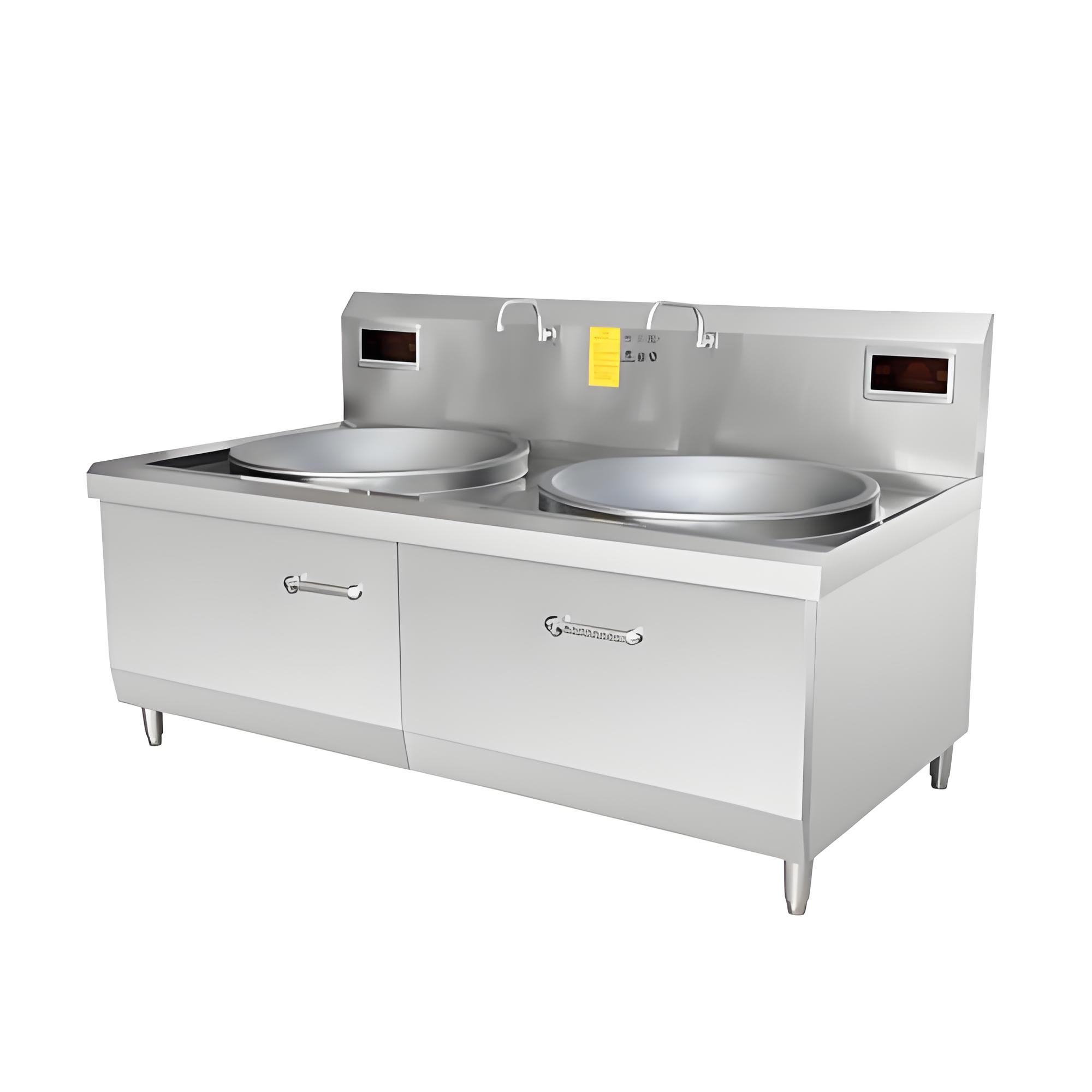
Common Pitfalls to Avoid
From helping restaurant owners choose induction cookers, I’ve noticed several recurring mistakes:
Focusing Only on Price: Cheap models often cut corners on materials or efficiency, leading to frequent issues.
Chasing High Power: Assuming higher power is always better can lead to excessive electricity costs or circuit overloads.
Ignoring After-Sales Service: Some lesser-known brands have limited service networks, causing delays in repairs that hurt business.
Overlooking Pot Compatibility: Commercial induction cookers require ferromagnetic materials (e.g., stainless steel or cast iron). I’ve seen owners buy cookers only to find their existing pots were incompatible, forcing additional purchases.
Advice: List your budget, restaurant size, and menu needs, then discuss them thoroughly with the supplier. Test the equipment before buying to ensure it matches your requirements.
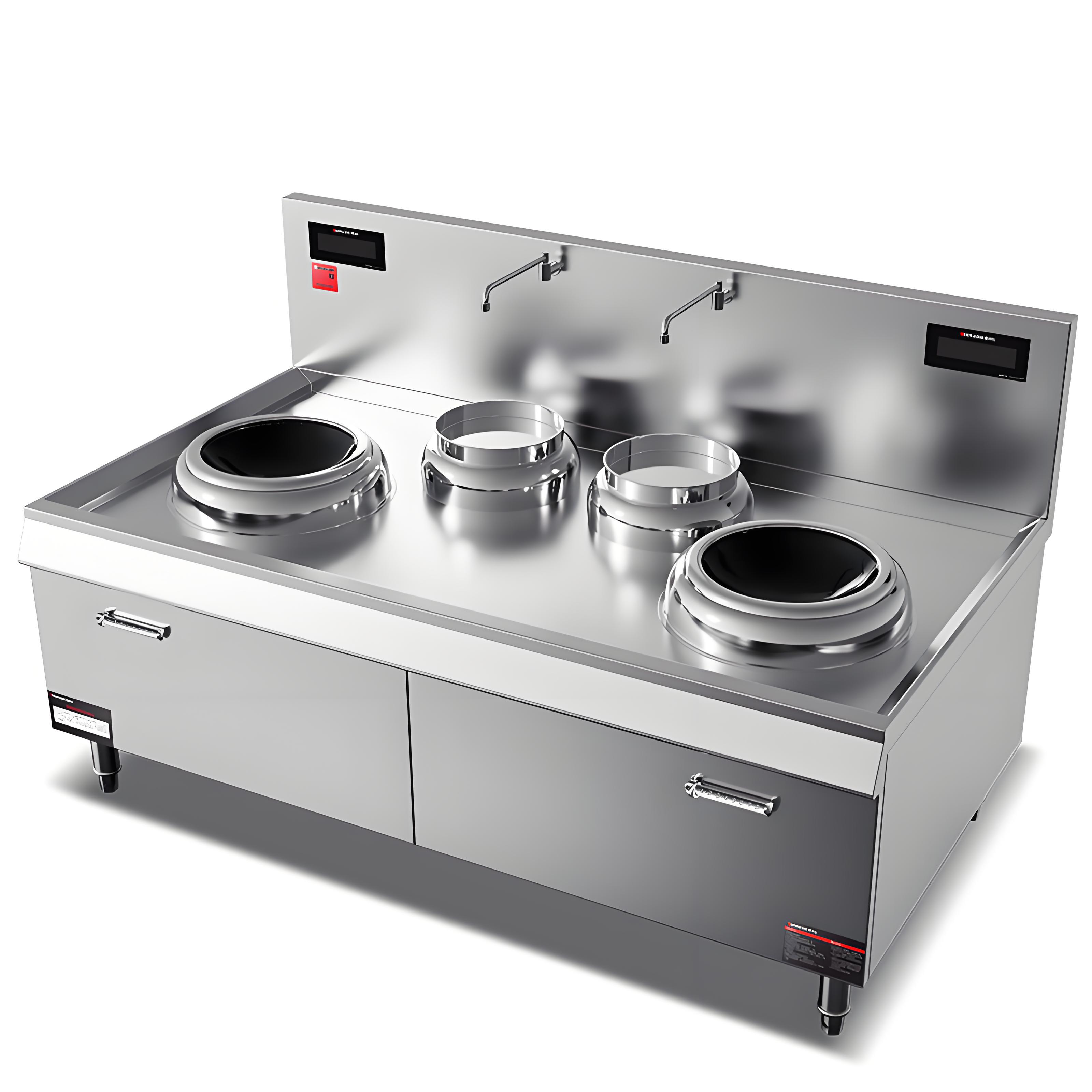
Conclusion: Choose Wisely for a Smoother Operation
Selecting a commercial induction cooker isn’t a simple task, but focusing on power, control method, material, safety features, and energy efficiency can significantly reduce the risk of choosing poorly. As someone who’s navigated this industry for years, I know a good induction cooker can boost kitchen efficiency and save costs. I hope this guide helps you make an informed decision and find equipment that fits your needs perfectly. If you have more questions, feel free to leave a comment—I’m happy to help!
Related Q&A
Q1: What’s the difference between commercial and household induction cookers?
A: Commercial induction cookers have higher power (typically 3kW and above) and are designed for durability and high-intensity use. Household models, with about 2kW power, are suited for small-scale cooking and have lower durability and cooling performance.
Q2: How can I tell if an induction cooker has good cooling performance?
A: Check if it has a multi-duct cooling design and sufficient fan power. Ask the supplier about the cooling system details or test the unit for 30 minutes to see if the body overheats.
Q3: What are the pot requirements for induction cookers?
A: Commercial induction cookers require ferromagnetic pots, such as stainless steel or cast iron. Test pots with a magnet—if it sticks, the pot is compatible.
Q4: How do I maintain a commercial induction cooker to extend its lifespan?
A: Regularly clean grease from the panel, keep cooling vents clear, and avoid rinsing the control panel with water. Turn off the power after use and have a professional inspect the wiring periodically.
Q5: How do I choose on a tight budget?
A: Prioritize Level 1 energy efficiency and 304 stainless steel bodies, and select a 3.5kW-8kW model based on your restaurant’s size. Choose brands with reliable after-sales support to avoid future repair hassles.





